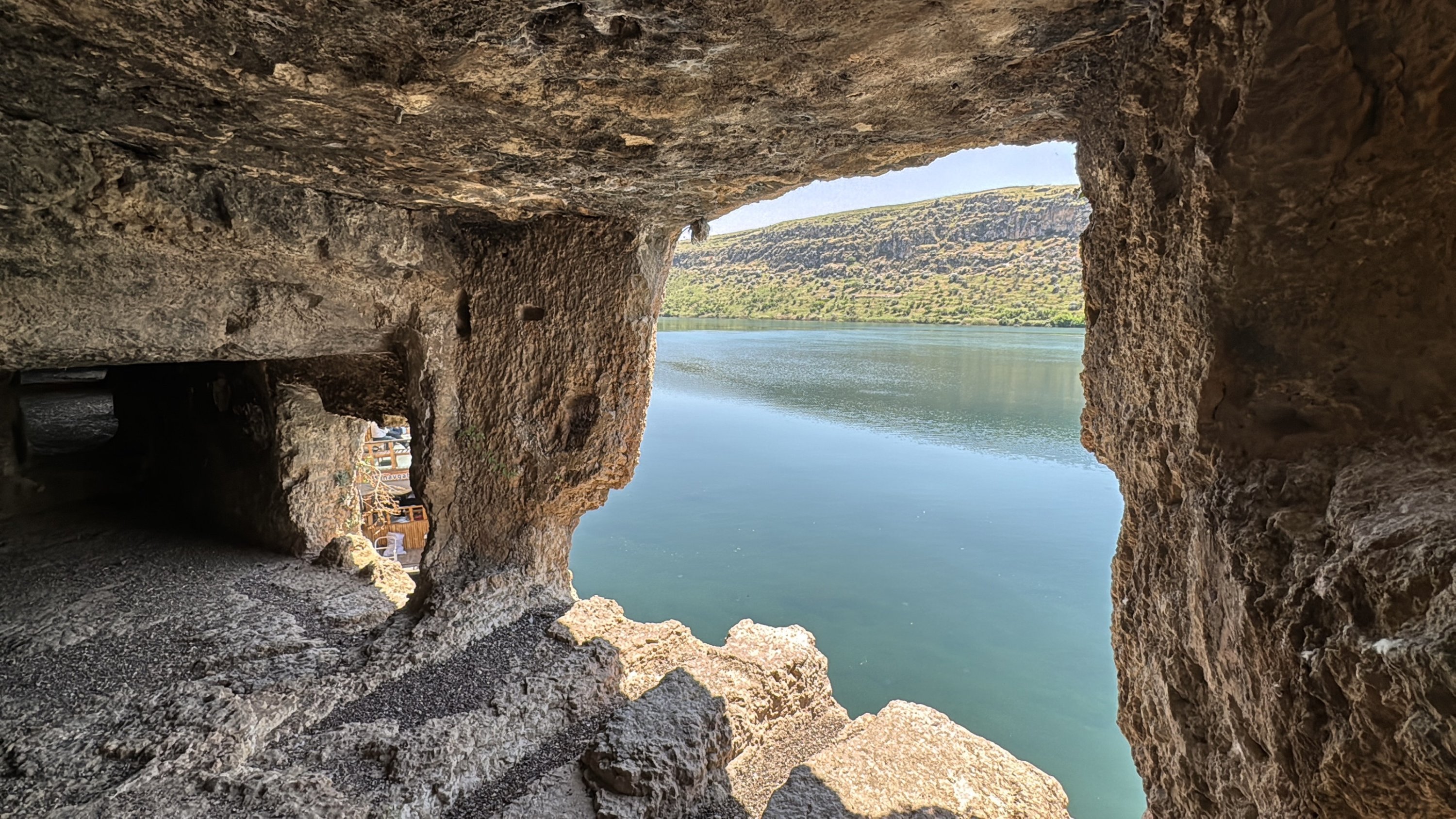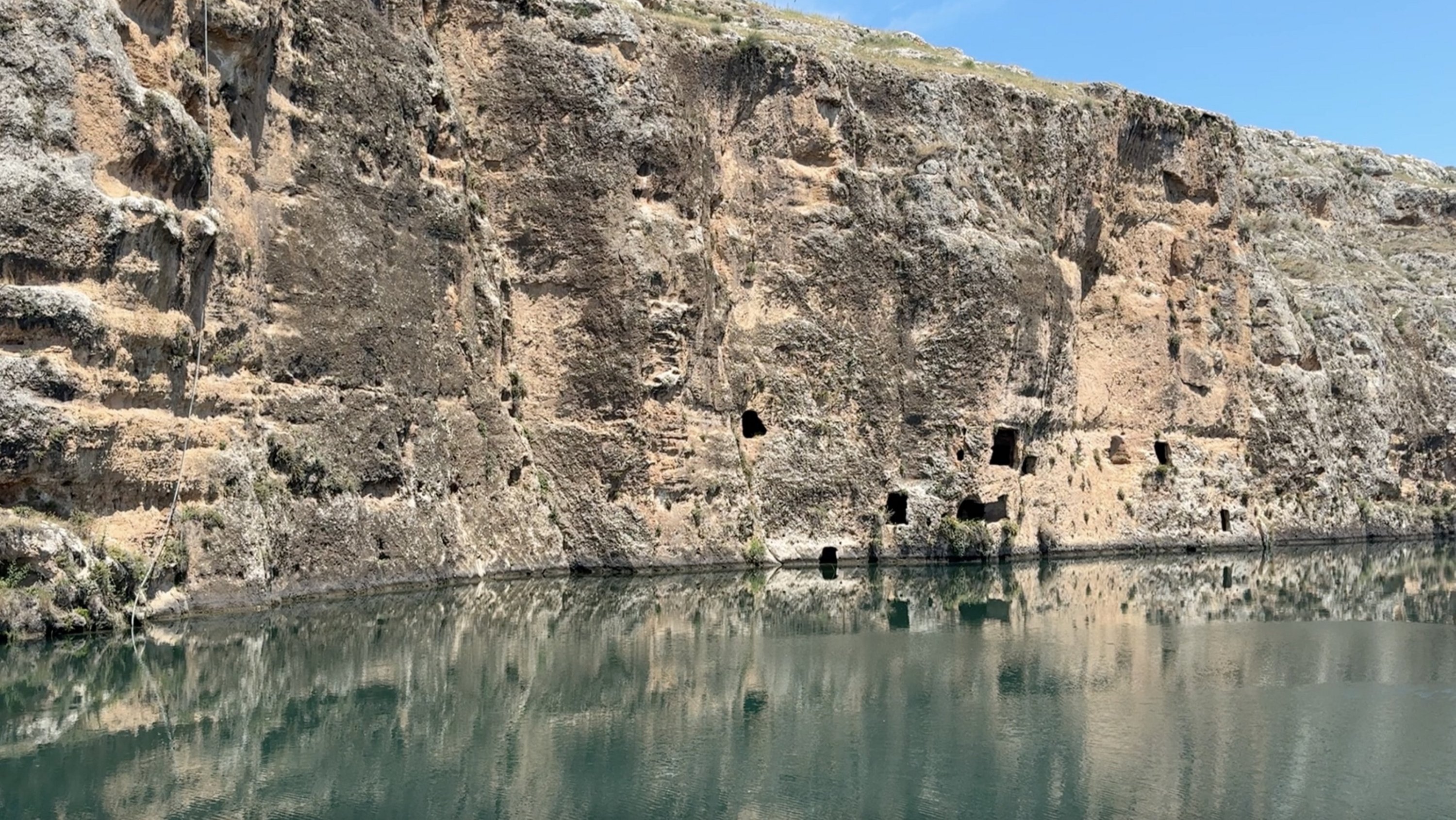© Turkuvaz Haberleşme ve Yayıncılık 2025
Located on the banks of the Euphrates River in the Besni district of Türkiye's Adıyaman, Kızılin Canyon draws attention with its rock tombs and a history dating back 5,000 years. Thanks to recent infrastructure improvements, it has become a popular destination for both domestic and international tourists.
Spanning approximately 200 hectares and containing nearly 300 caves of various sizes, Kızılin Canyon is situated about 45 kilometers (28 miles) from the district center. The area holds significant potential for both cultural and nature tourism.
Over the past three years, comprehensive infrastructure works have opened Kızılin Canyon to tourism. Visitors can enjoy unique landscapes on boat tours along the Euphrates River while embarking on a cultural journey through millennia-old caves.

Besni District Governor Çağlar Partal told Anadolu Agency (AA) that the canyon has become an important tourism investment for the region. He highlighted ongoing projects involving environmental landscaping, walking paths, viewing terraces and rest areas.
“This place, along with Göksu Canyon, is truly enchanting,” Partal said. “Its history dates back nearly 5,000 years. We first set up docking facilities and ensured safety for boat tours. We also established camping and picnic areas. With sponsorship support and contributions from the Adıyaman Governorship, Provincial Administration and our District Governorate, we’ve come this far. Last year, we welcomed 50,000 visitors and this year we expect between 100,000 and 120,000.”
Partal emphasized that visitors experience not only natural beauty but also historical heritage: “Boat tours take visitors to the cave areas. We have opened caves deemed safe for visiting. At the same time, we continue to expand the project with environmental arrangements and a sustainable tourism approach.”

Mehmet Alkan, director of the Adıyaman Museum, pointed out the canyon’s archaeological importance. Interest in the area has been increasing day by day, he said.
“The canyon covers about 200 hectares and we have identified nearly 300 caves,” Alkan noted. “Some were used as tombs during the Roman period, but settlement traces in the caves date back to the third millennium B.C. This makes the canyon not just a natural area but also an open-air archaeological park.”
Alkan explained that the caves include both single and multistory structures. “Visitors here can explore the natural beauty along the Euphrates River while embarking on a cultural journey. This region is one of the rare places offering both cultural and nature tourism,” he added.
